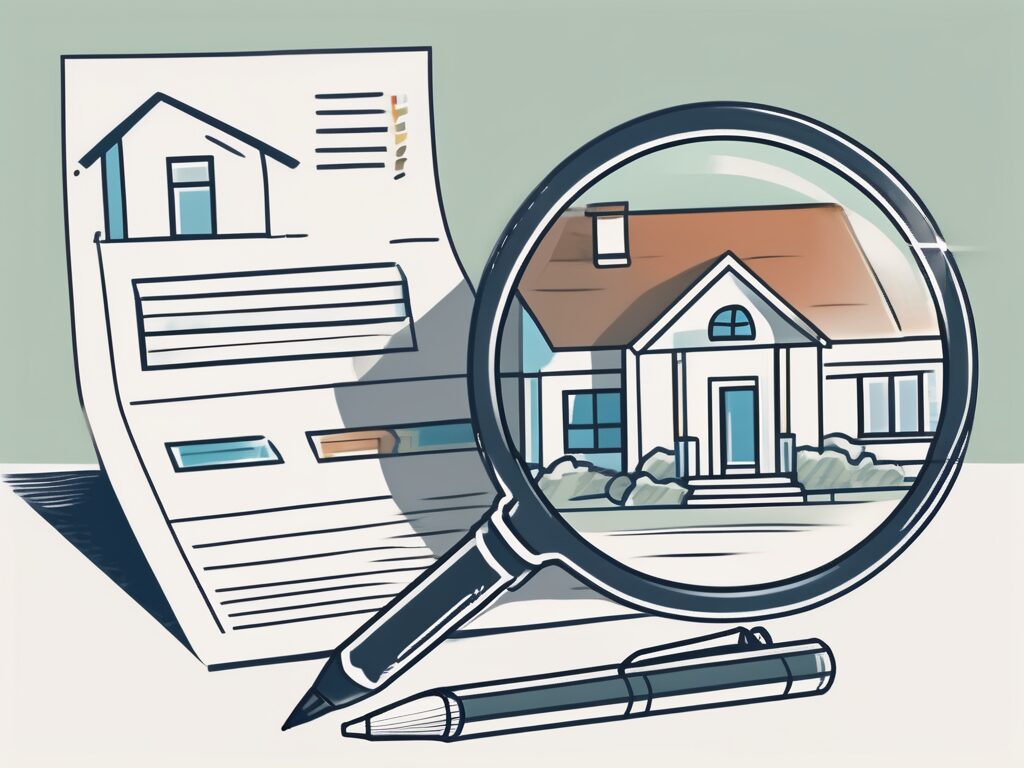
Agent A-Team or Solo Superhero? Finding the Right Real Estate Partner for Your Selling Journey in Wildwood Florida
When it comes to selling your home in Wildwood, Florida,…
January 29, 2024
Buying a home is an exciting milestone in one’s life. However, the process can be overwhelming, especially when it comes to securing a mortgage preapproval. To help you navigate through this crucial step, we have prepared the ultimate guide to understanding the mortgage preapproval process. Whether you are a first-time homebuyer or an experienced homeowner, this guide will equip you with the knowledge and tools you need to successfully obtain a mortgage preapproval.
Before we dive into the intricacies of the preapproval process, it is essential to understand the difference between preapproval and prequalification. Many people use these terms interchangeably, but they have distinct meanings when it comes to mortgage applications.
Prequalification is an informal assessment of your financial situation, based solely on the information you provide to the lender. It gives you a rough estimate of how much you could potentially borrow. Preapproval, on the other hand, is a more thorough evaluation that involves a deep dive into your financial history.
During the preapproval process, the lender will review your credit report, income, employment history, and other relevant factors. This rigorous assessment provides a more accurate picture of your borrowing capacity. Having a mortgage preapproval in hand strengthens your position as a serious buyer, giving you an advantage over those who only have prequalification.
But what exactly happens during the preapproval process? Let’s take a closer look.
Prequalification, as mentioned earlier, is a preliminary assessment. It is typically done online or over the phone and does not require any documentation. You provide the lender with basic information about your income, debts, and assets, and they give you an estimate of how much you may be able to borrow. This estimate is based solely on the information you provide, and no verification is done.
Preapproval, on the other hand, is a more formal process. It requires you to complete a mortgage application and provide supporting documents, such as pay stubs, bank statements, and tax returns. The lender will also pull your credit report to assess your creditworthiness. This comprehensive evaluation allows the lender to determine the maximum loan amount you qualify for.
Now that we have a better understanding of preapproval, let’s explore what happens after you receive your preapproval letter.
While preapproval is a significant milestone, it is important to remember that it is not the final step in getting your loan approved. Preapproval gives you a solid starting point, but the lender will need to conduct further evaluations before granting final loan approval.
Once you find the home you want to purchase and have an accepted offer, the lender will initiate the final loan approval process. This involves verifying the property’s value, conducting a comprehensive analysis of all your financial documents, and assessing whether the loan meets the lender’s criteria.
The lender will order an appraisal to determine the fair market value of the property. This is to ensure that the loan amount does not exceed the property’s worth. Additionally, the lender will review your income, employment history, and debt-to-income ratio to ensure that you can afford the monthly mortgage payments.
During this stage, it is crucial to avoid making any major financial changes that could affect your loan approval. This includes changing jobs, taking on new debt, or making large purchases. Any significant changes to your financial situation could jeopardize your loan approval.
Once all the necessary evaluations are complete, the lender will provide you with a final loan approval. This means that you have met all the requirements and are ready to move forward with the home purchase. Congratulations!
Keep in mind that the preapproval process is just the beginning of your homebuying journey. There are still many steps to take, such as finding the right property, negotiating the purchase price, and going through the closing process. However, having a mortgage preapproval puts you in a stronger position and gives you a clearer understanding of your budget.
Now that you have a better understanding of the preapproval process, you can confidently start your home search. Good luck!
Your credit history plays a crucial role in determining your loan eligibility and interest rate. Begin by obtaining a copy of your credit report from each of the three major credit bureaus: TransUnion, Experian, and Equifax. Review the report carefully for any errors or discrepancies. If you find any, promptly dispute them to ensure your credit score is accurate.
Furthermore, it’s important to understand how your credit score is calculated. Factors such as payment history, credit utilization, length of credit history, types of credit, and new credit inquiries all contribute to your overall creditworthiness. Taking the time to understand these factors can help you make informed decisions to improve your credit score.
When assessing your credit history, lenders also consider any derogatory marks, such as bankruptcies or foreclosures. If you have any of these on your credit report, it’s important to address them and provide explanations to the lender.
Researching different preapproval mortgage programs offered by lenders is essential to finding the right fit for your financial situation. Each program may have specific requirements and benefits that can greatly impact your mortgage journey.
Consider factors such as interest rates, loan terms, down payment options, and any additional fees associated with the program. It’s also important to evaluate the lender’s reputation and customer service. Reading reviews and seeking recommendations from trusted sources can provide valuable insights into the lender’s reliability and responsiveness.
Moreover, don’t forget to consider the long-term implications of the mortgage program. Will it allow you to achieve your financial goals? Will it provide the flexibility you need in the future? These are important questions to ask yourself before making a decision.
When applying for preapproval, lenders take various factors into consideration to assess your eligibility. These factors include your income, employment history, debt-to-income ratio, and credit score.
Having a stable employment history is crucial as it demonstrates your ability to generate a consistent income. Lenders typically prefer borrowers who have been employed with the same company or in the same industry for a significant period of time.
Additionally, your debt-to-income ratio is an important metric that lenders use to evaluate your financial health. This ratio compares your monthly debt obligations to your monthly income. Lowering your debt-to-income ratio by paying off outstanding debts or consolidating them can significantly improve your chances of preapproval.
Lastly, maintaining a good credit score is essential. Lenders rely on your credit score to assess your creditworthiness and determine the interest rate you qualify for. Aim to build a positive credit history by making timely payments, keeping credit card balances low, and avoiding unnecessary credit inquiries.
Before applying for preapproval, it’s important to gather all the required documents. These typically include proof of income (such as pay stubs or tax returns), bank statements, identification documents, and employment verification.
Having these documents ready will expedite the preapproval process and demonstrate your preparedness to the lender. It’s advisable to keep these documents organized and easily accessible throughout the mortgage application process.
Additionally, some lenders may require additional documentation depending on your specific financial situation. For example, if you’re self-employed, you may need to provide business financial statements or contracts to verify your income.
Don’t settle for the first lender you come across. Take the time to compare preapproval offers from different lenders to ensure you’re getting the best deal.
When comparing lenders, consider factors such as interest rates, loan terms, closing costs, and customer reviews. While interest rates are important, it’s also crucial to evaluate the overall cost of the loan, including any upfront fees or ongoing expenses.
Reading customer reviews and testimonials can provide valuable insights into the lender’s reputation and customer service. A lender with a strong track record of satisfied customers may be more reliable and responsive throughout the mortgage process.
Remember, securing a mortgage is a significant financial commitment, so it’s important to choose a lender that aligns with your needs and values.
Once you have chosen a lender, it’s time to complete the loan application. This step requires attention to detail and accuracy.
Be prepared to provide detailed information about your income, debts, assets, and employment history. The lender will also require authorization to access your credit report and verify the information provided.
Ensure that all the information you provide is accurate and up to date. Any discrepancies or inconsistencies may delay the preapproval process or even result in denial.
It’s also important to provide all required documentation promptly. Delays in submitting the necessary documents can prolong the preapproval process and potentially affect the timeline for closing on your future home.
By completing the loan application accurately and promptly, you can help expedite the preapproval process and move closer to securing your dream home.
Receiving a mortgage preapproval denial can be disheartening. However, it’s essential not to give up. Instead, take the opportunity to evaluate the reasons behind the denial.
If your preapproval is denied due to credit issues, focus on improving your credit score. Pay bills on time, pay off outstanding debts, and avoid taking on new credit. Monitor your credit report regularly to track improvements.
If the denial is due to other factors, such as insufficient income or employment stability, work on addressing those areas. Boost your income by taking on a side job or looking for opportunities for professional growth. Establish a stable employment history to demonstrate your financial stability.
While improving your credit score and addressing other factors are crucial steps, there are additional strategies you can employ to increase your chances of getting approved for a mortgage preapproval.
One effective strategy is to save for a larger down payment. Lenders often look favorably upon borrowers who can put down a significant amount of money upfront. By saving diligently and increasing your down payment, you can demonstrate your financial responsibility and reduce the lender’s perceived risk.
Another strategy is to reduce your debt-to-income ratio. This ratio is a measure of your monthly debt payments compared to your monthly income. Lenders prefer borrowers with a lower debt-to-income ratio, as it indicates a lower risk of default. To reduce your debt-to-income ratio, consider paying off outstanding debts or refinancing existing loans to lower your monthly payments.
Additionally, it may be helpful to consult with a mortgage professional or financial advisor to better understand your options and develop a plan to address any underlying issues. These professionals have extensive knowledge and experience in the mortgage industry and can provide valuable guidance tailored to your specific situation.
Furthermore, it’s important to remember that a mortgage preapproval denial does not mean you will never be able to secure a mortgage. It simply means that you need to take steps to improve your financial situation and address the reasons for the denial. With perseverance and dedication, you can overcome these obstacles and ultimately achieve your goal of homeownership.
Securing a mortgage preapproval is a critical step towards realizing your dream of homeownership. By understanding the mortgage preapproval process and following the steps outlined in this guide, you can position yourself for success. Remember to be proactive, gather the necessary documents, and make informed decisions when choosing a lender. Even if you encounter obstacles along the way, perseverance and dedication will ultimately lead you to achieve your goal of homeownership.
Ready to take the next step in your homeownership journey? Richr is here to support you. As a platform specializing in For Sale By Owner listings, we provide access to key consumer portals and MLS to maximize your property’s visibility. Begin with a solid foundation by getting a free home valuation to understand your property’s worth in today’s market. Don’t hesitate—call us at 844-957-4247 for your complimentary Comparative Market Analysis (CMA) and make informed decisions as you navigate the home selling process. Your dream of selling your home is within reach with Richr.

If you want the Richr team to help you save thousands on your home just book a call.
 Book a call
Book a call